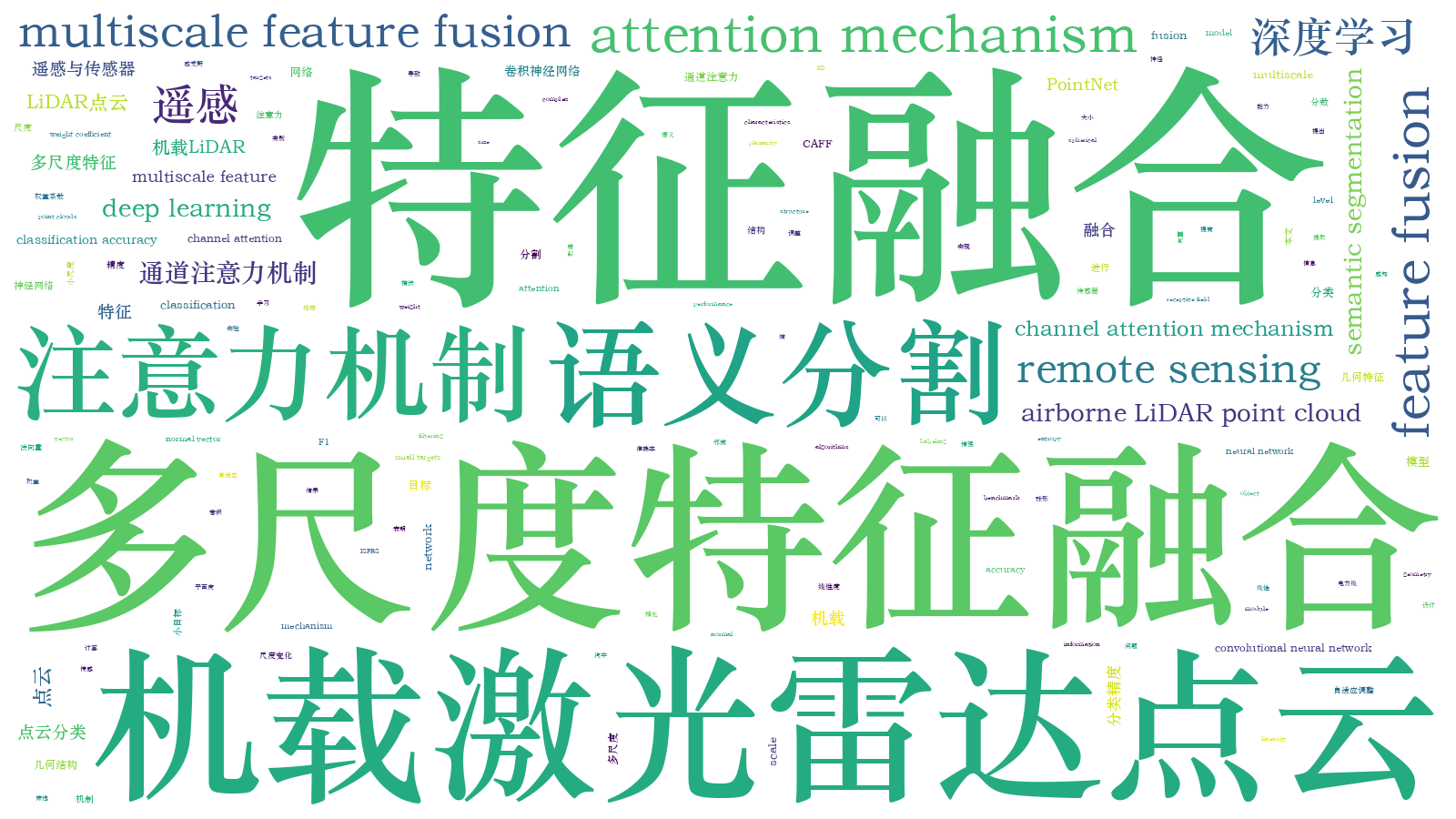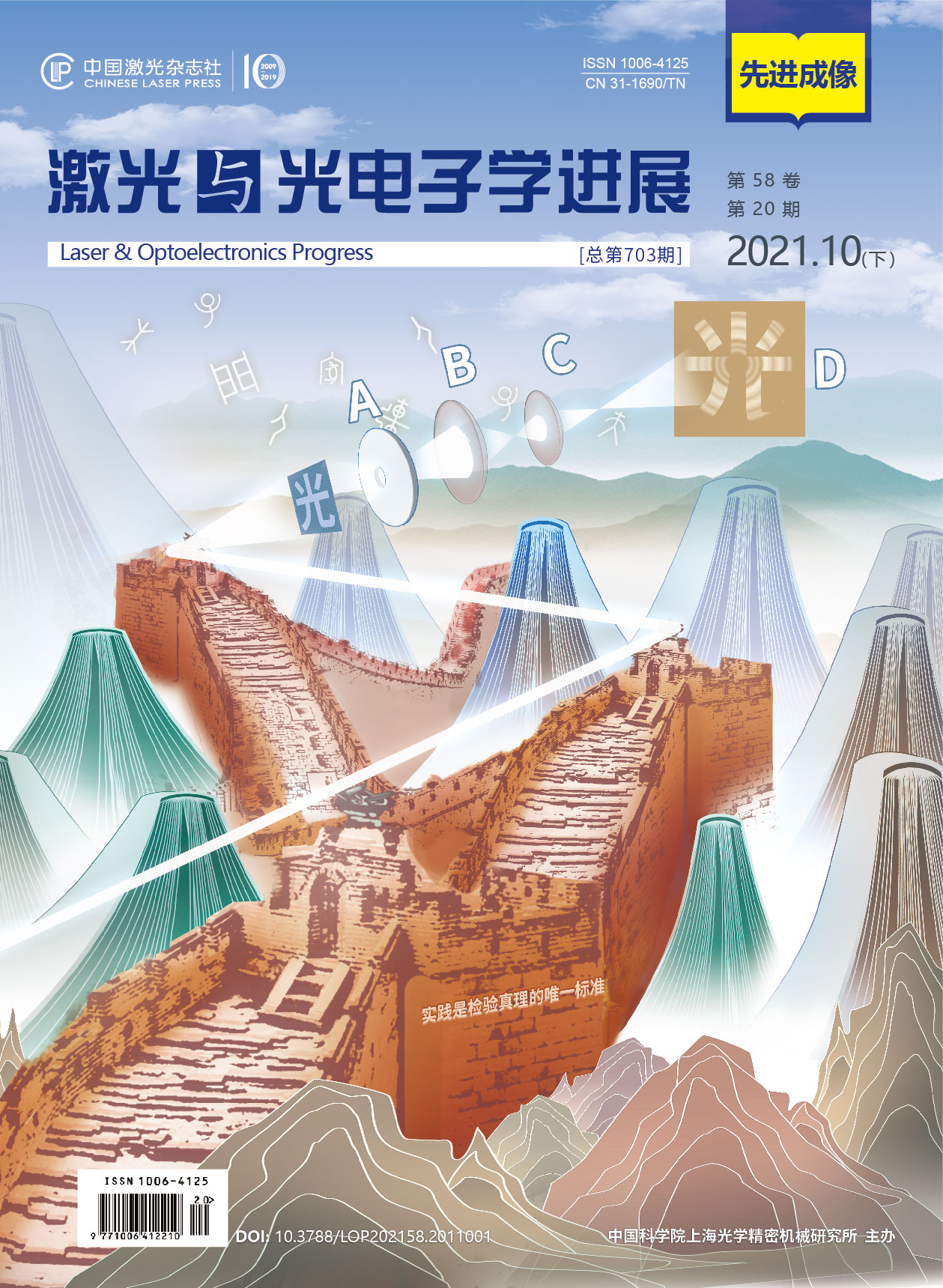基于CAFF-PointNet的机载LiDAR点云语义分割  下载: 963次
下载: 963次
针对机载LiDAR点云中几何结构复杂和不同地物尺度变化大导致小目标点云分类准确率低的问题,本文提出了一种基于通道注意力机制进行多尺度特征融合的卷积神经网络。首先,通过球形邻域计算点云的平面度、线性度、法向量以及本征熵等浅层几何特征,并将其与网络提取的深层次语义特征进行融合,增强模型对点云几何结构的感知能力;其次,设计基于通道注意力机制的多尺度特征融合模块,学习特征融合的权重系数,使网络可以自适应调整不同尺度目标的感受野大小,实现对不同尺度信息的筛选,进而提高小尺度目标的分类精度。实验结果表明,与其他模型相比,本文模型在ISPRS机载LiDAR点云上的平均F1分数为72.2%,且对电力线和汽车类别均取得了最高的分类精度,F1分数分别为64.3%和79.9%。
Herein, we propose a convolutional neural network based on channel attention mechanism for multiscale feature fusion regarding the characteristics of LiDAR point clouds, such as the complex geometric structure and extreme scale variations among different categories, resulting in the issue of low classification accuracy of small targets. First, low-level features (planarity, linearity, normal vector, and eigen entropy) are calculated for each point by setting a spherical neighborhood, and they are fused with high-level features acquired by the network to improve the geometry awareness of the constructed model. Then, a multiscale feature fusion module is designed based on the channel attention mechanism to learn fusion weight coefficient so that the network can adapt to the receptive field size of different scale objects and realize different scales information filtering, which improves the classification performance of the small-scale object. According to the experiments, the average F1 score using the ISPRS Vaihingen 3D Semantic Labeling benchmark is 72.2%. Compared with other algorithms, our model has the highest classification accuracy in the powerline and car categories with F1 scores of 64.3% and 79.9%, respectively.
赖鸣, 赵健康, 刘传奇, 崔超, 龙海辉. 基于CAFF-PointNet的机载LiDAR点云语义分割[J]. 激光与光电子学进展, 2021, 58(20): 2028004. Ming Lai, Jiankang Zhao, Chuanqi Liu, Chao Cui, Haihui Long. Semantic Segmentation of LiDAR Point Cloud Based on CAFF-PointNet[J]. Laser & Optoelectronics Progress, 2021, 58(20): 2028004.







